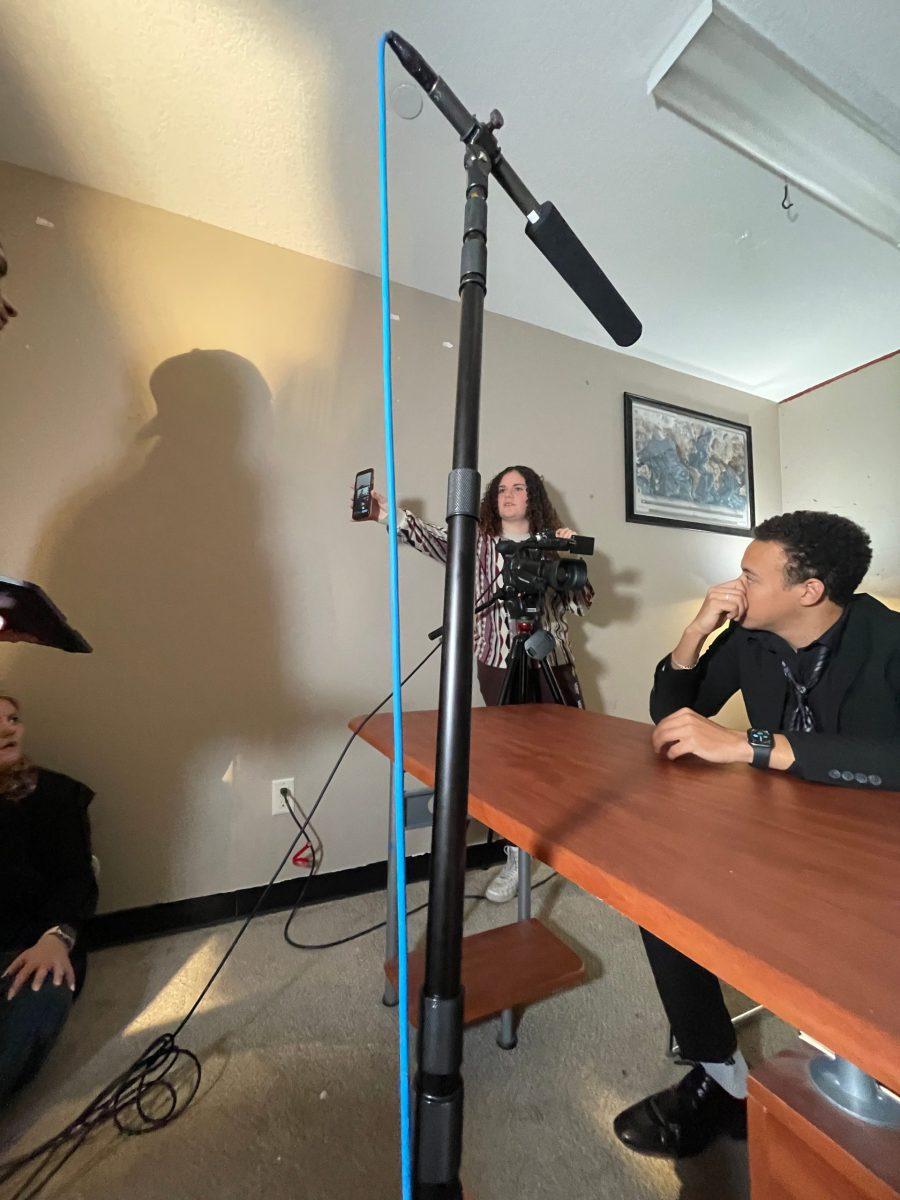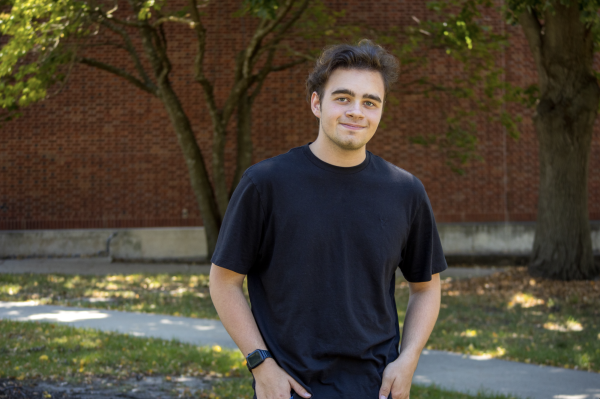In a post-coronavirus pandemic world with a new generation of students, Drake’s culture around film is slowly growing. With no film school, those wanting to study film normally take digital media production as their major. In light of this, students and faculty show no sign of slowing down with their passions.
Students like Chris Veninga, Logan Hock and Mithi Sivaprakash work with film as a hobby or career, producing films they enter into contests and festivals or plan to go into it as a career. Drake Broadcasting System, a student-led media group, has been slowly recovering membership and interest since the pandemic put productions on hold. According to DBS President Erica Sawyer, the organization serves a very important purpose to campus, as it’s not just for journalism students but for any student interested in creating video-related content.
“You can write a story from your dorm room and send it to someone who can edit it, but with DBS everyone needs to be in one room,” Sawyer said. “The pandemic hurt DBS, and my time here has been rebuilding DBS from that state. We’ve invested in the live shows to teach people how to use the studio, how to edit and how to use the equipment that we have.”
Sawyer said that one event crucial to Drake’s film culture is the DBS 48-hour Film Festival, which they host every semester. Students collaborate in a 48-hour period to create 5-minute films to screen to the public.
“Not everyone wants to work on a live show or make a package,” Sawyer said. “The 48-hour Film Fest is a time for more creative and narrative content. I’m happy that we’ve continued to do one every semester.”
Film culture at Drake is different from most schools, with students interested in film coming from the journalism majors rather than a traditional film school. Lakshmi Tirumala, associate professor of digital media production at Drake, played a part in shaping the culture into what it is today.
“Back in 2019 when I took this job at Drake, I created a film production class,” Tirumala said. “It’s a semester-long production class, which is what used to be advanced video production. Because my expertise was in film and documentary, that’s what I did, and a lot of students loved the idea of making something that they were excited about. That class is what I like to think jump-started this notion of making films.”
For students interested in film both in and outside of the classroom, Tirumala’s expertise has made him one of the go-to professors for students needing help with independent productions.
“I usually tell my students who are passionate about filmmaking to bring me an idea and I help them get the story and dialogue more streamlined,” Tirumala said. “Before I give them the green light to go out and shoot it, I have them read it multiple times. I tell them I’m always there if they need me. I’ve been on all those sets almost every day of filming for most of the films that my students are creating outside of class.”
Due to the size of Drake’s School of Journalism and Mass Communication, it allows for students to have a lot of one-on-one time with their professors. Students have the ability to receive help with any projects or ideas. It has also become a haven for anyone wanting to try something new within any aspect of video production. The culture of the SJMC has helped shape both the student outlook, as well as the film culture.
“You bring them an idea and they jump on it. That’s what the SJMC is all about,” Tirumala said. “We never really shoot down anything. If it’s a good idea that ultimately benefits the students, [we] always say let’s do this. That’s always been the culture of [the] SJMC even more so now than before.”
The SJMC has seen a curriculum change over the past couple of years that is developing a broader span of what students can do with a digital media production major. Students seldom find that they’ve only learned about the journalism side of production, with their interests shaping the way they approach their education.
Michael Cummings, a senior studying digital media production and advertising, said that he’s seen film culture develop to be more supportive, and form a community.
“When I first came into Drake, I thought that there wasn’t much of a film culture here,” Cummings said. “It wasn’t really anything specifically for film or video, more broadcasts and news which is not at all what I was interested in. Over my time at Drake the programs really developed, especially with Lakshmi being here. He’s someone who’s really promoted updating and revamping a lot of the video classes to be more relevant to people like us who might want to do social media or documentary work or movies or stuff like that. It’s a lot more broad than just broadcast journalism, which is how it should be.”
The film culture at Drake is still relatively new and stands on the shoulders of the culture that has made the SJMC what it is today. Through the coming years, there is hope for the next generation of student filmmakers to be just as strong as the last.
“I hope to see more interest and more passion,” Tirumala said. “It’s more about learning as well. It’s not just getting the camera out and doing anything that you want. It’s also about keeping that motivation to keep on learning. While collaborating with other people and making a film or two, it doesn’t matter whether that story is stupid or not. You have to just get out and do it.”








